All About Grant's Synadenium
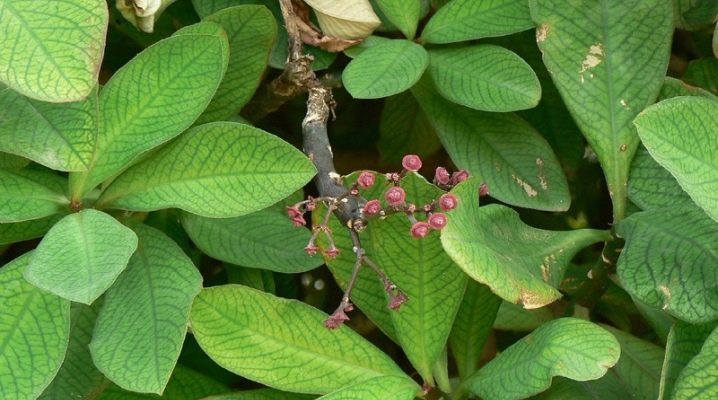
Synadenium Granta is a common variety of milkweed that is actively grown in home greenhouses. The plant historically belongs to the inhabitants of the tropics, subtropics, its homeland is the African continent. Aesthetic appearance, ease of care make this flower especially attractive for flower growers of any level.
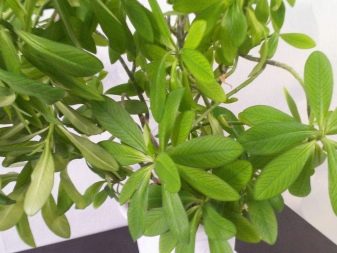
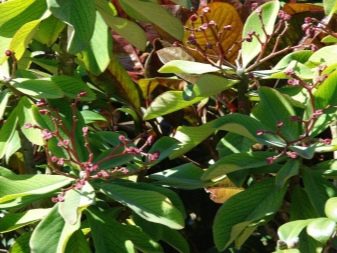
Description of the flower
The Grant's synadenium is referred to as synadenium Grantii in the official source, and it is often not only compared, but also confused with the white-capped milkweed. In fact, it is also a spurge, only of a different subspecies. There is definitely a visual similarity with the traditional representative, but there is also a difference - the texture of the foliage, which in Grant's synadenium has a pronounced pubescence. In general, synadeniums are geographically located in the South African regions in the wild. There are many species of this plant, but it is the Grant variety that is in demand all over the world.
Most often, the flower grows in home greenhouses, since it is difficult to do this outdoors due to the peculiarities of the climate. This subspecies is recommended for flower growers of completely different levels, including for beginners. Mistakenly, many believe that the consonance of the synadenium and adenium is a reason to attribute Grant and the desert rose to the same species.
In fact, the name mixes two words - "sin" and "aden", that is, compound and iron. The glandular hairs that adorn the plant along the length of the stem are the reason for this naming.

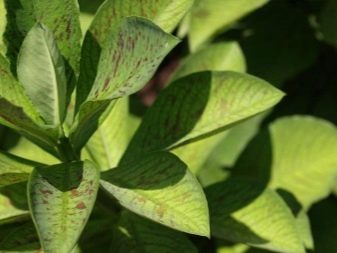
Botanical description and other features of the plant:
- the tree is quite massive, resembles a lush bush;
- stretches up to 3 m in height;
- branching shoots;
- to get a spectacular home bush, the plant is regularly pinched;
- grows rapidly, stretches at least 20 cm annually;
- it is a succulent, has long, powerful leaves, stems that hold moisture for a long time without any problems;
- foliage of a bright green saturated shade, although there are species with plates of variegated, red-burgundy, yellow shades;
- the skin of the leaves is dense, the petioles are short;
- the shape of the foliage such as an oval or reverse egg, which are arranged in turn or opposite each other;
- flowers have a non-trivial appearance, they are similar to an umbrella, complemented by small scarlet stamens;
- flowering is not particularly decorative, but, of course, decorates the plant, increasing the notes of its exoticism;
- the plant blooms at home rarely, usually in the summer, when the growing season is active;
- branched roots, penetrate deep into the ground;
- infrequent processes of a straight type with a dense structure are formed on the branches.
If you form the crown of the Grant correctly, the result will be a neat tree with a lush crown. The unofficial name of the plant is the tree of love, to which the synadenium owes the shape and pigmentation of flowers. One of the important characteristics of a flower is that it is toxic, more precisely, its milk juice is poisonous. It can cause reactions in the form of allergies or even poisoning when ingested. Therefore, it is important to place this representative of the flora away from children, animals, and carry out manipulations such as trimming with gloves.

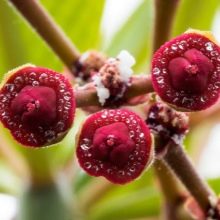
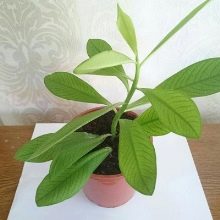
Planting and leaving
At home, Grant grows and develops excellently, subject to competent agricultural technology and taking into account the peculiarities of planting. First of all, you need to choose the right soil. Succulents in general are not particularly picky about this issue, but this species requires loose, neutral soil with good air permeability.You can make up the soil mixture yourself, for this, peat is combined with leaf-type soil and coarse sand in equal proportions. And also you need to add wood ash, which protects the root system from rot, attack of harmful bacteria.
The container for planting must certainly be drained, for which a layer of clay fragments, expanded clay is created. Brick chips have a good effect on the soil, it prevents stagnation of water. Since the plant develops rapidly, there comes a time when it is cramped in its usual container. During this period, Grant is transplanted into a large container with the obligatory drainage holes at the bottom. The planting and replanting algorithm is identical:
- a wide drainage layer is formed at the bottom;
- half filled with soil mixture;
- an old or new plant is cleared of an earthen coma, but not too actively;
- then it is inserted into the pot, the roots are straightened, the substrate is poured so that a centimeter of free space remains up to the top of the container;
- if necessary, part of the roots is cut off during transplantation;
- the planting and trimming procedure is carried out with gloves.
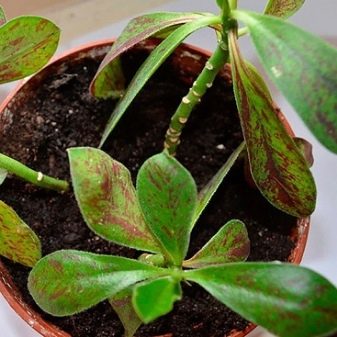

After the plant is planted and established, it needs proper care. Although it belongs to the very non-capricious, there are nuances that need to be taken into account. First of all, pay attention to the microclimate, the location of the flower.
- Lighting. This plant is very fond of the sun, but direct rays are destructive for it, foliage will receive burns. Therefore, during the period of active sun, it is necessary to provide blackout. From autumn to spring, the plant will lack the sun during the day, so you need to use additional lighting means - phytolamps. If the flower does not receive enough light, its decorativeness decreases sharply, the leaves brighten, the internodes become longer.
- Air humidity. Dry air is not such a big problem for this type of plant, so the heating period is tolerated relatively well. Accordingly, there is no need to increase the humidity using special devices. But it is worth periodically wiping the leaves, since a lot of dust accumulates on them. But this is more of a sanitary measure than a wellness one. In the heat, it is worth periodically spraying from a spray bottle, but so that the shoots are not moistened
- Location and temperature. This representative of the flora will be provided with complete comfort by an air temperature of up to +25 degrees during the growing season. But in winter, the optimal regime decreases to +15 degrees. You can place the spurge anywhere, but at the same time it is worth considering that each place will have its own characteristics of care. On the south window, you need a shadow in the active phase of the sun, for example. The ideal place for a Grant synadenium pot is a window to the west or east with diffused light.
- Moisturizing. Often it is not worth watering the spurge; you need to do this only when the top of the soil is dry. Spraying can be carried out periodically between waterings, but not more often than once every two weeks. If the plant had to be thirsty for a long time, then the foliage will wither, the shoots will wither. Probably, in this case, restoring moisture will not correct the situation. It is necessary to remove all drooping parts so that the plant actively develops fresh shoots and leaves.
- Fertilizers. The plant is fed twice - in autumn and spring, when it is actively growing and preparing for a phase of relative rest. For feeding, it is worth purchasing special mixtures that are intended for succulents. And also complex formulations for green pets are suitable. It is very important to follow the instructions for each drug, not to increase the dose. You can dilute it in a lower concentration, and add it when watering.
- Transfer. Young succulents are transplanted every year in the spring, usually in March. When the spurge reaches its fifth birthday, it is enough to repeat the event every 3 years. The main thing is to do this before the start of the active phase of development.When Grant takes on a massive appearance, only the top of the ground is replaced.
- Pruning. This succulent perfectly tolerates pruning, the formation takes place without prejudice to its development. The process can be carried out at any time during the year. The formation of the crown of the plant allows you to get a lush dense tree or single-stemmed. To slow down the growth of the tree, pinching is carried out. Usually at home he is not allowed to reach the maximum height. If you want to get euphorbia in the form of a bush, then you need to trim it regularly - it is this procedure that provokes the development of branches.
Don't forget about sanitary type pruning. It is carried out as needed when the injured, dry parts are removed.
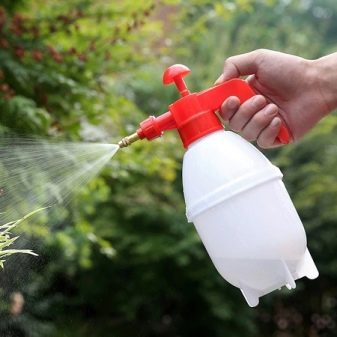

Reproduction
This plant is propagated in two ways - by cuttings and seeds.
- Cuttings. To obtain cuttings, shoots are cut off at least 10 cm long, maximum 15 cm. They are removed from the top of the plant, and there should be a small amount of leaves on them. Sprinkle the cut site with crushed activated carbon and let it dry. When something like a film forms there, the shoot is placed in a soil consisting of peat and sand, deepening by about 2.5 cm. The soil is pre-calcined in an oven for disinfection purposes. Then the container is moved to an area with good lighting, where it is realistic to maintain a temperature of about +20 degrees. After the appearance of fresh shoots, it can be assumed that the seedling is rooted, it can be transplanted to a permanent place in a suitable soil mixture
- Seed method. This method requires more time and effort, so it is used only by experienced growers. The procedure is carried out only in the spring. First, a container is prepared with a mixture of peat and sand, on which the seeds are located. On top they are sprinkled with a sand layer, the thickness of which is about 1 centimeter. Then the soil is moistened with a spray bottle and covered with a glass lid. In about a couple of weeks, seedlings will appear, the glass is removed. When the seedlings stretch up to 10 cm, they are dived in the first stage.
The second is carried out when the plants have reached 30 cm in height.
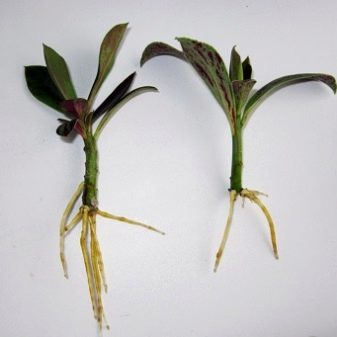
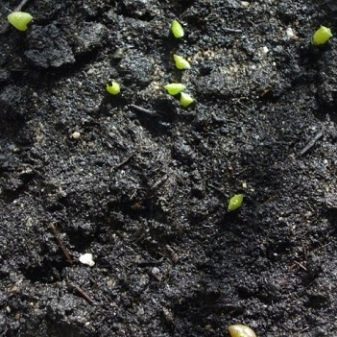
Diseases and pests
Since plants are very toxic, pests are usually not scary for him. But various diseases can deliver many unpleasant minutes to flower growers. But almost all problems arise due to illiterate agricultural technology, in general, the plant's immunity is good. Every problem can be prevented or corrected.
- Drops the leaves. Most likely, the flower survived temperature changes, or irrigation norms are violated: watering is rare, with cold water. It is necessary to correct these two points, and remove the damaged parts.
- Turgor is reduced or lost. The plant does not have enough water, so moisture needs to be normalized.
- Shoots are too stretched. There is little light for the flower, you need to cut it off and put it in a suitable area.
- Spider mite. Use acaricidal formulations or a soap solution. It is important to take care of the humidity in the room.
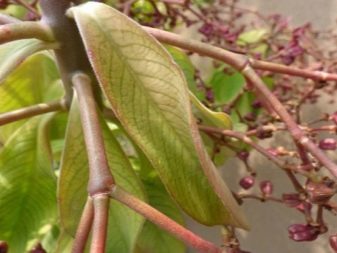
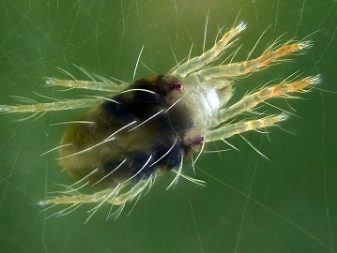







































































































The comment was sent successfully.